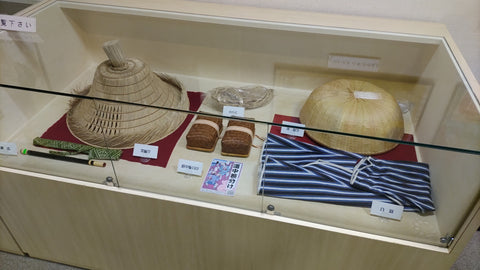Hashima Movie Museum in Hashima, Gifu Prefecture
Jul 14, 2021
History of Hashima
The Hashima Movie Museum is located in Hashima City, at the southern part of the Gifu prefecture. Due to the adverse conditions of lowlands that flow like a mesh, they have always been plagued by the threat of flooding. Due to the great flood in 1586, the current Kiso River was newly born. As a result, it is located in the so-called Rinchu area surrounded by the Kiso River in the east, and the Nagara River in the west. After that, the name was changed to Haguri-gun, and it was transferred from Owari no Kuni to Mino no Kuni. Since the Middle Ages, the notable historical items of Hashima City are (1) Takenashi Castle, (2) Minoji Highway, (3) Enku, and (4) Horeki flood control work.
On April 1, 1954, Hashima City was born by the merger of towns and villages. Then, the construction of the bridge, the opening of the Shinkansen Gifu Hashima Station in 1964, and the Meishin Expressway Gifu Hashima Interchange in 1983, and the transportation networks were improved. Information taken from this source.

The Museum History
The Hashima Movie Museum used to be an old movie theatre that has been repurposed to house this quaint, but mesmerizing movie poster museum. A lot of the old Japanese movie theatres were family-run, and could not compete with the rise of VHS tapes in the 1970s.
Today, the main building has a history and folklore museum, and a movie poster museum, which officially opened on February 23, 1996. It is especially rare nationwide, and has a large collection of projectors, cinematography equipment, old and new movie posters. The museum is closed on Mondays, and some Saturdays they hold film screenings on the second floor. They are open from 9 am to 5pm (admission until 4:30 pm), and the cost of admission is 300 yen ($2.70). Book your trip to the museum here.

Highlights of the Museum
The moment you walk through the door, your eyes lock like a hawk on prey when the first thing that hits you from entering the door way is an original Godzilla from 1954.

The first floor houses mesh models of carnivorous allosaurus, monsters from live-action movies, including Gamera and Gyaos, and other paper sculptures by Eito Hara. Eito Hara lives in Gifu, and was born in Gujo of the Gifu prefecture. His obsession with kaiju started after he asked his grandmother to buy him a Godzilla toy when he was a child. He made kaiju sculptures with paper clay and other materials after he entered elementary school, and continued to hone his skills on his own.

Eito Hara and a head of a “kaiju” monster at the Hashima Movie Museum in Hashima, Gifu Prefecture, in April 2021 (Shuhei Yamashita)



When you travel up the staircase there is a beautiful two-panel B0 of the Legend of Dinosaurs & Monster Birds (恐竜・怪鳥の伝説, Kyōryū Kaichō no Densetsu, lit. Legend of Dinosaurs and Ominous Birds), also known in the U.S. as The "Legend of Dinosaurs", a 1977 Japanese science fiction film produced and distributed by Toei Company. (image below)

Once you arrive on the second floor, it houses two sections. One is a screening theatre that is decorated with Japanese original films, as shown below.





While in the other room, it showcases large projectors and cinematography equipment with new and old posters running across the ceiling.




The Hashima Movie Museum is a must-visit for any film fanatic from Kaiju to Kurosawa. Subscribe to our newsletter for more updates, adventures and information on Japanese movie posters.



